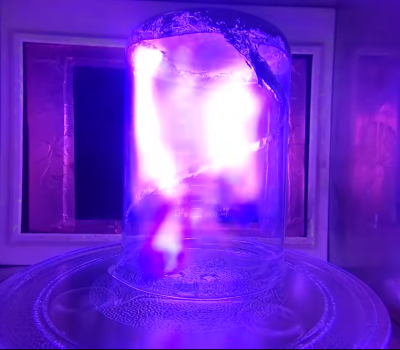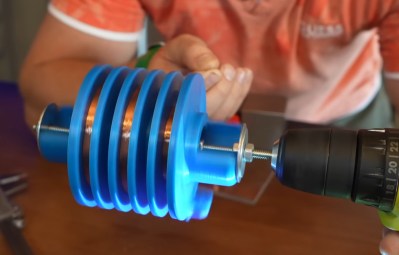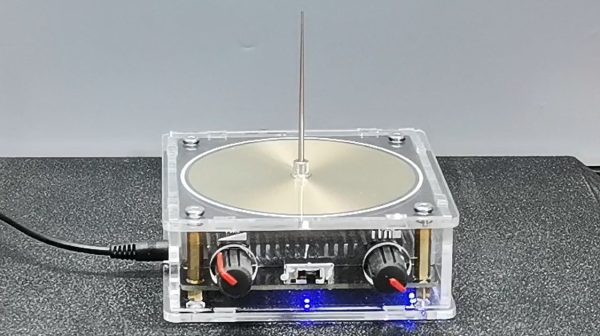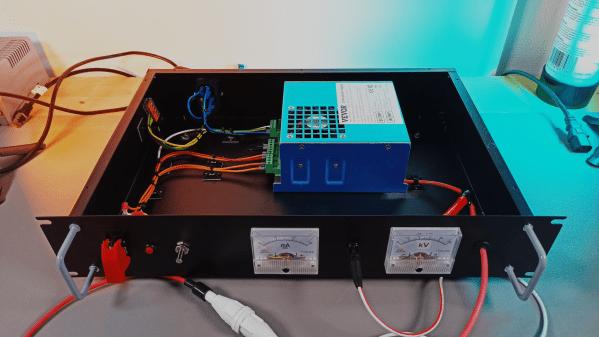You might have heard of electrets being used in microphones, but do you know what they are? Electrets produce a semi-permanent static electric field, similar to how a magnet produces a magnetic field. The ones in microphones are very small, but in the video after the break [Jay Bowles] from Plasma Channel makes a big electret and demonstrates it’s effects.
Electrets have been around since the 1800s, and are usually produced by melting an insulating material and letting it solidify between two high-voltage electrodes. The original recipe used a mix of Carnauba wax, beeswax, and rosin, which is what [Jay] tried first. He built a simple electric field detector, which is just a battery, LED and FET, with an open-ended resistor on the FET’s gate.
[Jay] 3D printed a simple cylindrical mold and stuck aluminum foil to the outer surfaces to act as the electrodes. He used his custom 6000:1 voltage transformer to hold the electrodes at ~40 kV. The first attempt did not produce a working electret because the electrodes were not in contact with the wax, and kept arcing across, which causes the electric charge to drop off. Moving the aluminum electrodes the inner surfaces of the mold eventually produced an electret detectable out to 10 inches.
This was with the original wax recipe, but there are now much better materials available, like polyethylene. [Jay] heated a a block of it in the oven until it turned into a clear blob, and compressed it in a new mold with improved insulation. This produced significantly better results, with an electric field detectable out to 24 inches.
[Jay] also built an array of detectors in a 5×5 grid, which he used to help him visualize the size and shape of the field. He once pulled off a similar trick using a grid of neon bulbs.





















